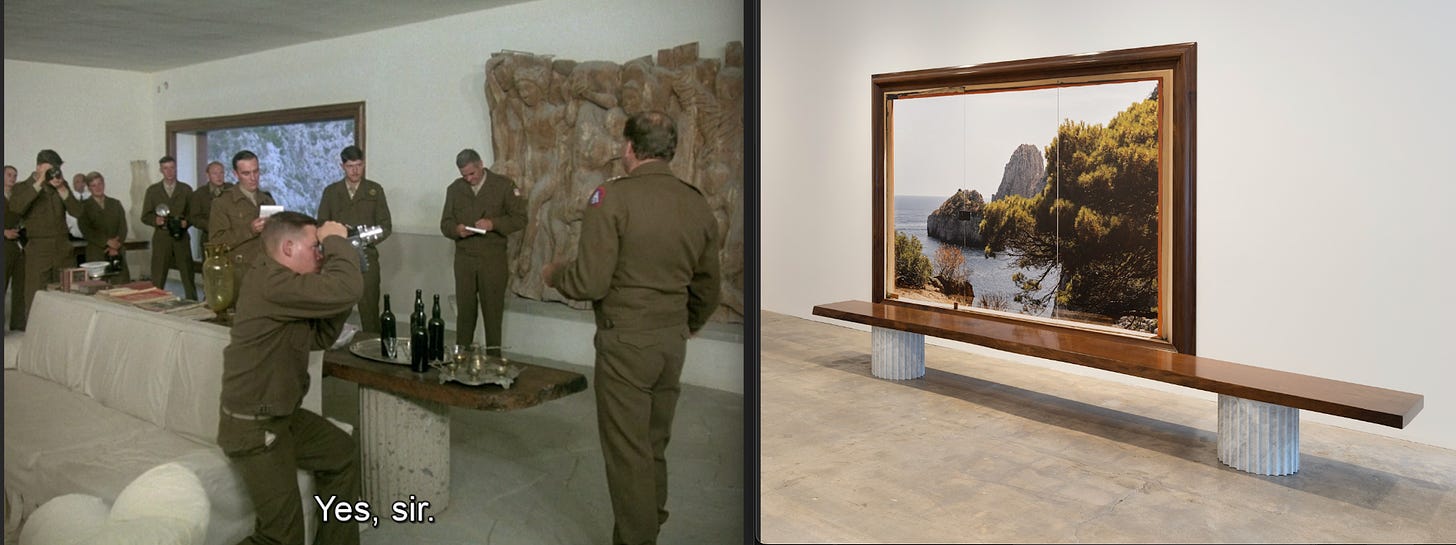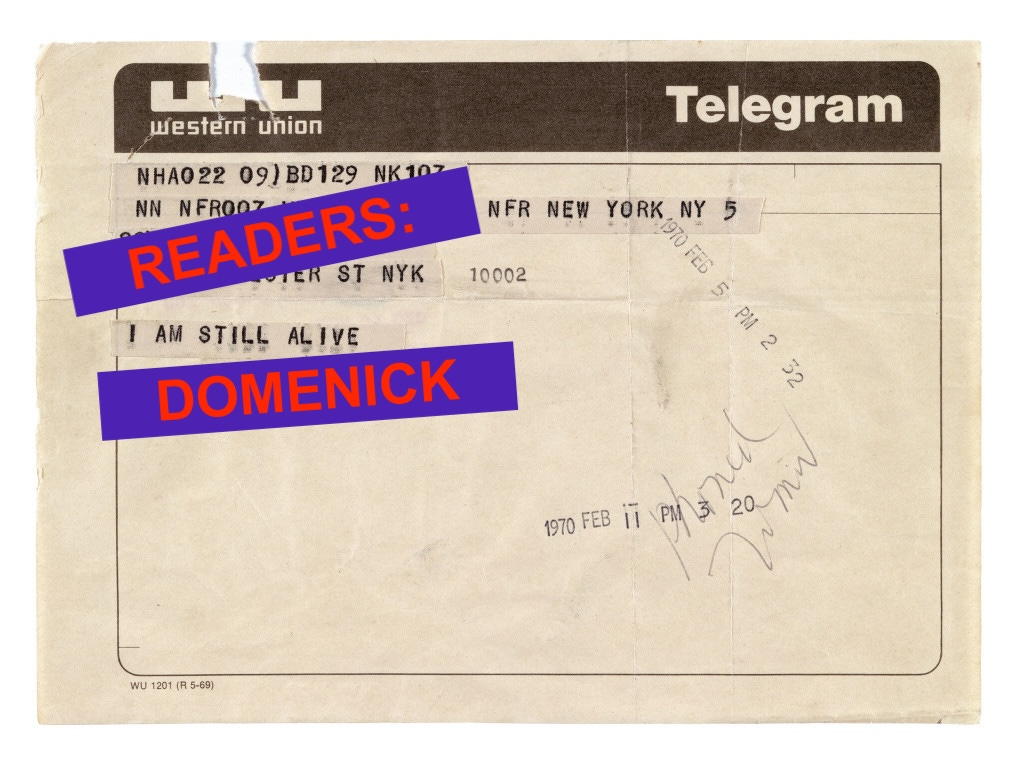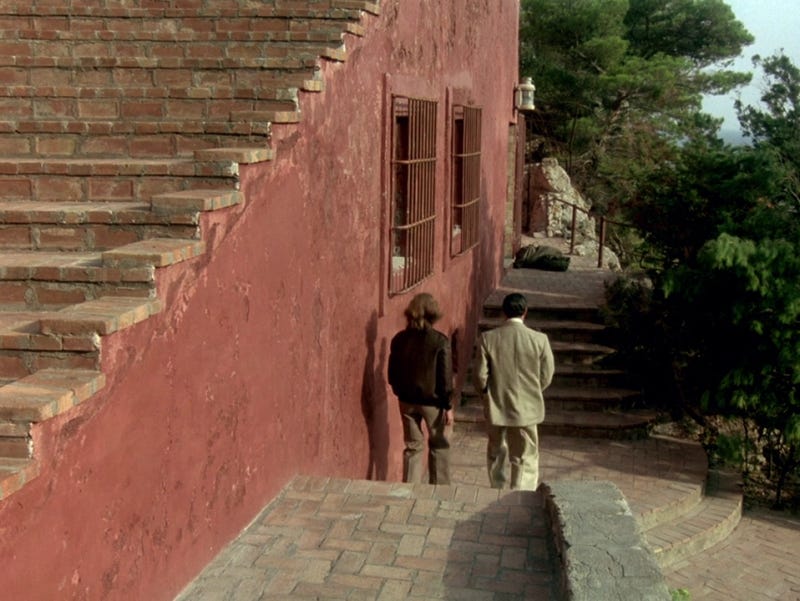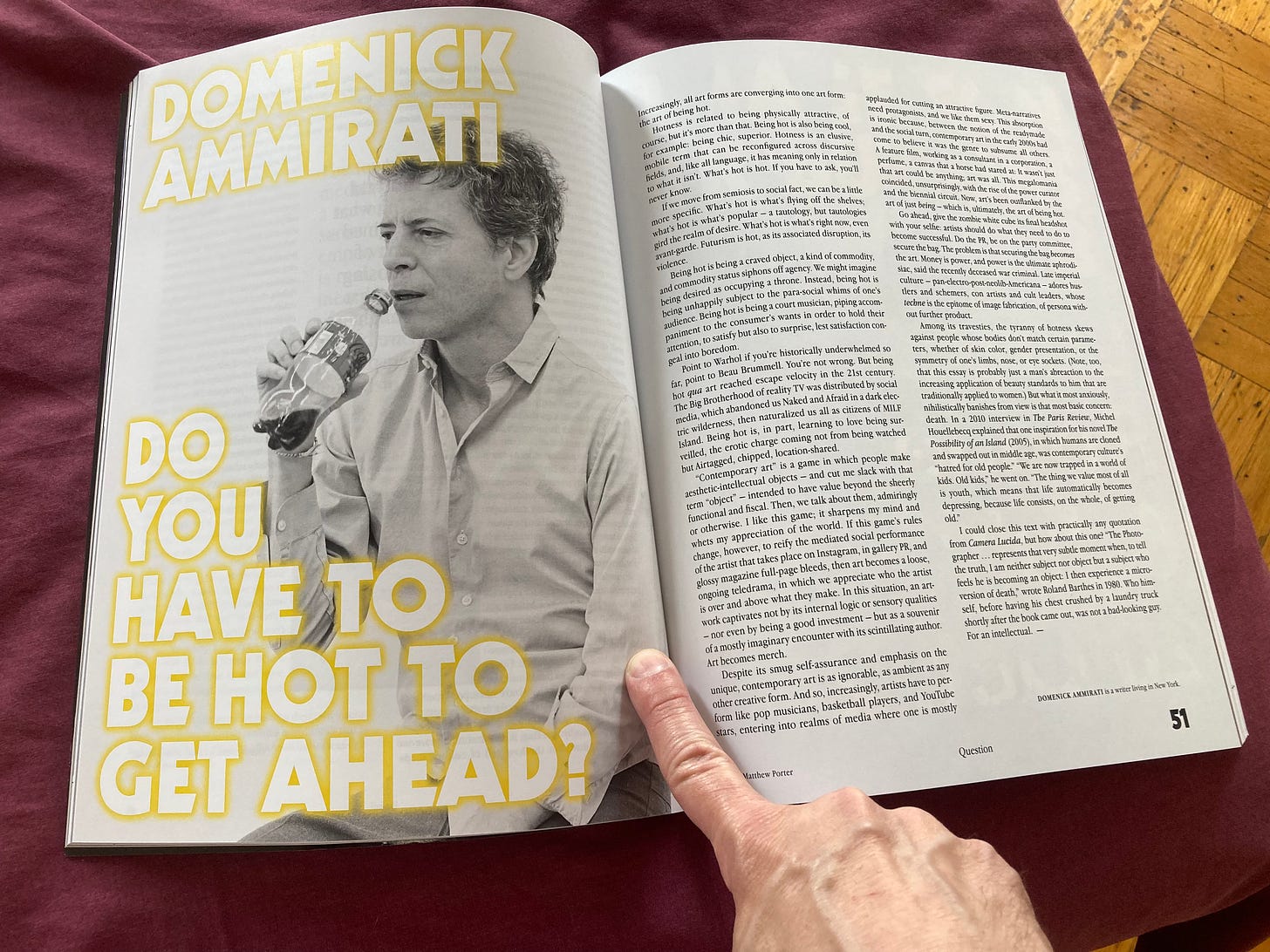I'm Not Dead
Summer slowdown. Plus Chinese tire ballad, new writing in Spike, and Cavani's Skin flick
If the drag in Spigot’s release schedule hasn’t been evident—and I hope it has—then I should make it clear that I’m still kicking. I should have written long ago to the say that August would be slow. I just didn’t think it would be this slow.
With the first week of the fall art season right around the corner, you can look forward to hearing again from me in full soon, once the first round of openings and the Armory has given me some art to strip the flesh off of. If I’m lucky, I’ll crank something out in medias res next week, will possibly go live at some ill-advised moments on IG, and will certainly issue a recap just afterward, as I did last year for a publication not to be named. Thereafter Spigot will return to their bimonthly pace.
Film
Following up on the last edition of Spigot, one of my favorite readers sent me a tip related to The Skin, Curzio Malaparte, and his casa. Craig wrote in with the news that La pelle was in fact made into a movie. Directed by Liliana Cavani, notorious for 1974’s The Night Porter, La pelle came out in 1981 and featured a notable cast: Marcello Mastroianni as Malaparte himself; Claudia Cardinale as a princess from the House of Caraccio, a prominent Neapolitan aristocratic clan; and Burt Lancaster as General Mark Clark, who commanded the Allied forces (and whom Malaparte claimed to have guided into Rome via the Via Appia Vecchia like conquerors of yore). What was it with Lancaster and the Italians? He took his famously bronzed, patriarchal turn in Visconti’s Il gattopardo (1963), starred in a second Visconti film in 1974, played another aristocrat in Bertolucci’s 1900, narrated a nine-part Italian-TV miniseries on the life of Verdi, and cameoed as the Pope in a 1982 Italian recounting of the life of Marco Polo. A Spigot friendship bracelet to whomever can explain the connection.
Cavani’s version of La pelle fittingly spans the gamut from the scenic Casa Malaparte on Capri—including the furniture now available in replica format (thank you, Gagosian)—to a graphic depiction of one of the book’s grisliest episodes. The film is available to stream on a few of the major platforms, easily found.

Writing
I’m pleased to note that I’m featured in the Summer issue of Spike magazine. One of the publication’s regular features is a question posed by a writer who then answers it to the tune of a thousand words, all accompanied by a full-page bleed glamour shot of the author.
My question: Do you have to be hot to get ahead in the art world?
My answer begins:
Increasingly, all art forms are converging into one art form: the art of being hot.
Hotness is related to being physically attractive, of course, but it’s more than that. Being hot is also being cool, for example: being chic, superior. Hotness is an elusive, mobile term that can be reconfigured across discursive fields, and, like all language, it has meaning only in relation to what it isn’t. What’s hot is hot. If you have to ask, you’ll never know.
And so on. A special thanks goes to Isabelle and the rest of the Spike team for allowing me to grace their pages with a little instigation and look so terrible doing it. A big shoutout to photographer Matthew Porter for agreeing to make me look as ghastly as possible without a thought to his reputation.
While I pray for the day the piece becomes available online to that you can all read it, that will happen only once the season turns. For now, I encourage you to purchase Spike issue #80: The State of the Arts, available here.
Video
The ridiculous, the comic, the sublime. Hopefully no one died. The sound track: “Free as the Wind” by Xu Wei from 2005.





